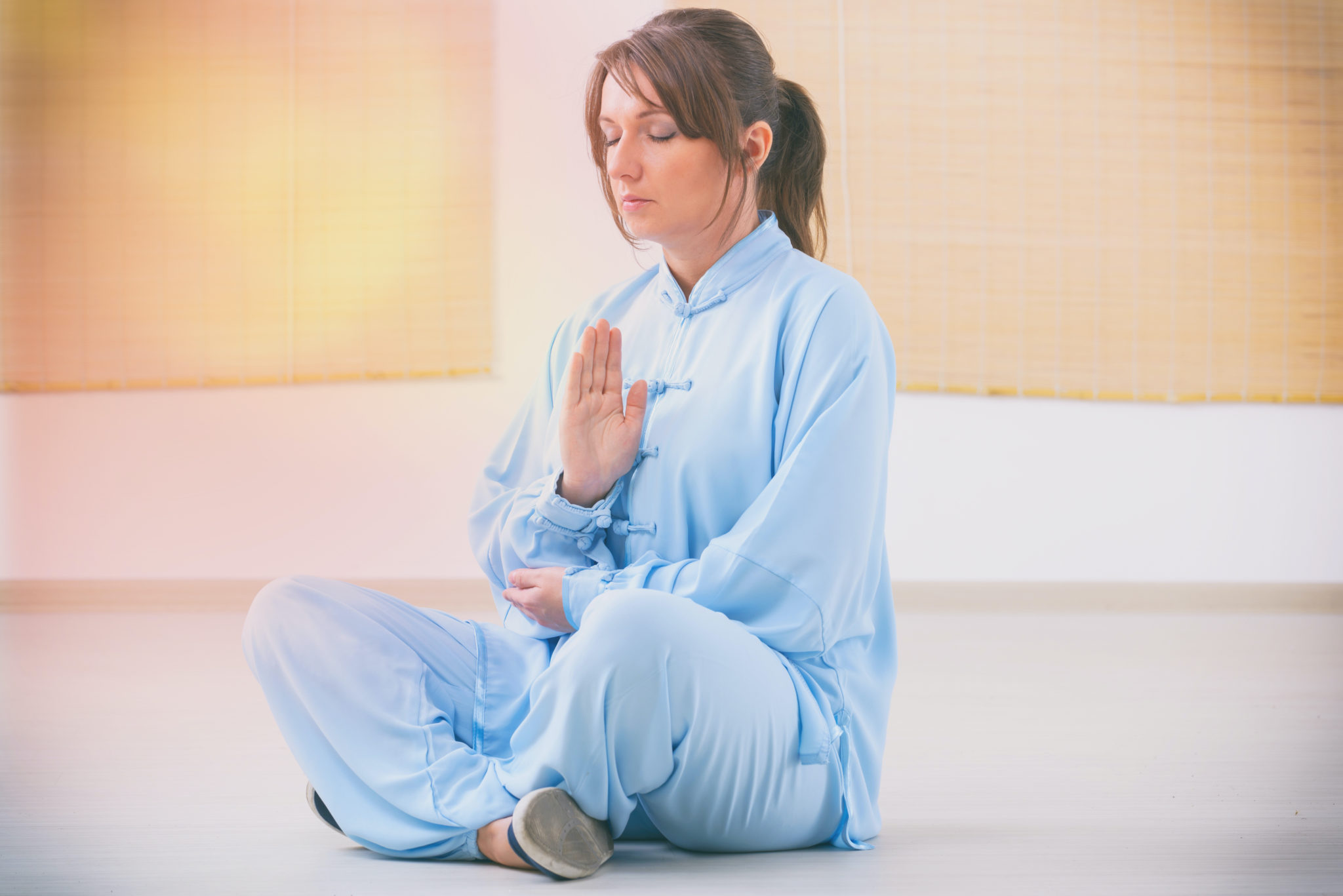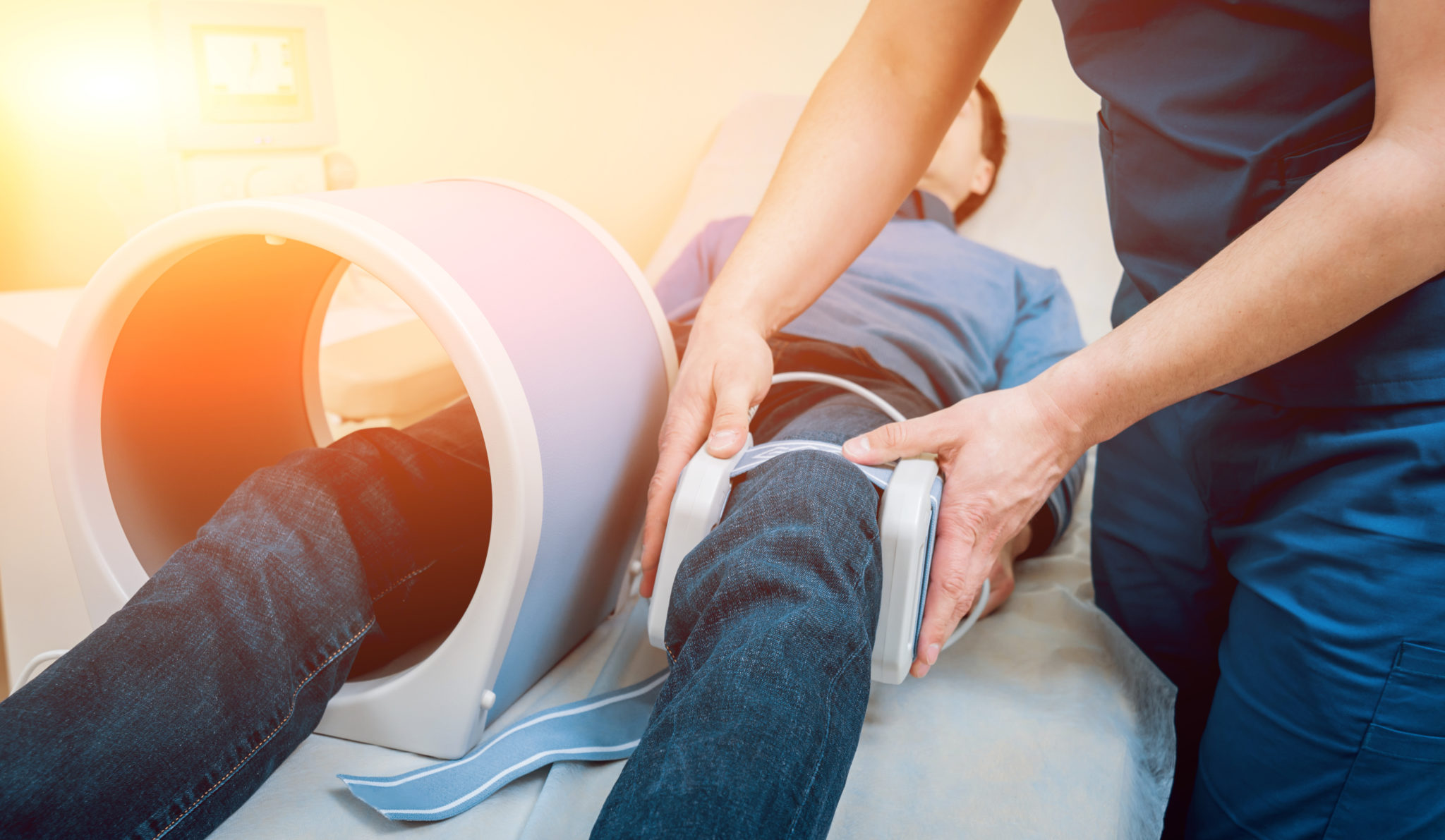Qigong






What is it?
Qigong (pronounced chee-gung), is an energy healing practice, focused on cultivating vital life-force. The term comes from the Chinese words “Qi” meaning “Energy” and “Gong”, meaning “work” or “practice”. Qigong is based on the premise that the human body is an energy system. As long as it has energy, or Qi, it is alive; when the energy is gone, it is dead.
According to the Earl E. Bakken Center, there are two main Qigong techniques:
- Wai Dan: physical movement and concentration, focused on coordinating physical movements and breathing techniques (similar to Tai Chi). Practitioners are able to find the fluctuation of energy within the postures, movements, breathing patterns and transitions.
- Nei Dan: sitting meditation and guided imagery or visualization, which focuses on becoming more acquainted with the breath, body and mind.
Practitioners use these techniques mainly for what it is called “Medical Qigong”. Medical Qigong can be used to heal oneself or to heal others. It is, in fact, one of the main branches of Traditional Chinese Medicine and the energetic foundation from which acupuncture, herbal medicine and Chinese massage originated.
Medical Qigong can be used for self-healing or to heal others. In self-healing, individuals practice Qigong exercises to enhance their own health. When healing others (also known as Qi emission), Qigong practitioners emit Qi with the intention to heal others.
In addition to Medical Qigong, other practitioners extend the use of the Qigong practice for other purposes. Some people use the principles of Qigong for martial arts, focusing on physical prowess, while others use it in a spiritual way, focusing on enlightenment.
Core philosophy
As one of the fundamental pillars of Traditional Chinese Medicine, Qigong has the same underlying principles. Qigong also shares many common philosophies with other practices like Tai Chi, Yoga, among others.
In essence, the simplest belief behind Qigong is that the gross physical is a bio electric mass. It also believes it is generally weak versus to what it can be with development. This overall field is in considerable flux, often at the whim of the proclivities of the individual, diet and emotional strengths and weaknesses.
Qigong and Yoga work to clear away energetically “stuck” structures as a result of habits. In other words, most human systems typically do not utilize and enhance the great “freeways” within – instead they gravitate to smaller roads their daily habits hold them to. Qigong stimulates the natural abilities that would naturally come forth from an unencumbered system.
Meditation lies as a crucial component underneath the Qigong practice. This is for a very good reason as our bio electric mass changes with our deep thoughts, beliefs and emotions and it is crucial to be in touch with them. Incorrect thinking and emotional holds focus the bio electric mass upon that pattern.
Qigong is a powerful energy practice because it involves both a physical aspect (wai dan) and a mind aspect (nei dan) aimed at unblocking energy. This can make it look similar to tai chi, yoga and/or meditation practices. Practitioners in fact use both of these aspects to get in tune with one’s Qi. When they achieve this, they can apply Qigong to heal others in a similar way to Reiki, though it can use additional techniques.
Practitioners believe that to effectively emit Qi to help heal others, Qigong healers need to maintain their personal health. Therefore, they continuously practice self-healing Qigong to regulate their personal health. In mastering this practice for themselves, Qigong practitioners follow this generally accepted set of principles:
- Dynamic and static: in maximizing oneself’s Qi, practitioners know that static Qigong is aimed at accumulating Qi in the Dantian (locations of the body that can store Qi). Dynamic Qigong aims to promote the free flow of Qi in the meridians and muscles as well as to alleviate specific areas of physical energetic congestion. The principle “cherish stillness in motion and motion in stillness” applies as practitioners aim to strike the best balance between dynamic and static.
- Being relaxed and natural: when practicing Qigong, relaxation must be both physical and mental. This does not mean slackness but a balance between tension and suppleness dominated by the conscious mind.
- Coordinating the will and Qi: in Qigong exercise, the will and Qi should move together. The practitioner should not put undue emphasis on breathing mechanics other than what happens naturally through correct practice. It is also not advisable to put undue emphasis on the flow of Qi.
- Active exercise & inner health cultivation: active exercise refers to a series of procedures used to regulate respiration, attain proper posture and relax both mind and body. Inner health cultivation refers to the ongoing commitment to advance the control over one’s Qi.
- Proceeding step by step: Qigong should be practiced in an orderly way. Practitioners follow the saying “haste makes waste”. They put in arduous training to be able to direct Qi to follow changes in body posture, respiration and will.
Many people often confuse Qigong with Tai Chi. Tai Chi involves just the physical (wai dan) aspect of Qigong and is usually more structured. Qi gong can be thought of as a movement you do for a certain situation, as opposed to tai chi form, which is a series of movements that work on the entire body in a flowing sequence. Tai Chi, however, shares many of the underlying principles and people who practice it are able to find optimal levels of health in the same way Qigong practitioners do.
History
The history of Qigong spans over at least three thousand years. It grew a long way from its shamanic roots into a rigorous study only recently confirming its efficacy by the modern scientific body.
The first documented book that references Qi and survived to this day is probably the “Book of Changes” (I Ching) dated 1122 B.C. I Ching describes the study of the relationships between the three natural forces of energies: Heaven (Tian), Earth (Di) and Human (Ren). In the book “Tao Te Ching” during the Jou Dynasty (1122 to 934 B.C.), Lao Tzu stressed the importance of accumulating Qi and achieving softness to achieve health. The Spring and Autumn Annals (770-476 B.C.) states:
“Flowing waters do not stagnate, and for hinges that move do not rust. Our bodies are like this. If the body does not move, the vita essence (Jing) does not circulate; and if it does not circulate, the energy of the body (Qi) will stagnate.”
The “Yellow Emperor’s Classic of Internal Medicine” (220 B.C.) describes Qigong for medical uses and breathing to increase circulation of Qi. Qigong, however, evolved drastically during the Eastern Han Dynasty (58 A.D.) as Buddhism came to China. Many Buddhists used medication and Qi cultivation practices, with a mainly spiritual goal.
During the Liang Dynasty (502-557 A.D.), an Indian Buddhist monk taught Chinese priests how to transform their health by making their physical bodies strong. Around this time, the priests developed the five animal styles of martial arts: the tiger, crane, leopard, snake and dragon, which imitated the different animals in the way they move and fight. In 581-907 A.D. Chao Yuan-Fang compiled a compendium of Qigong methods listing 260 different ways of increasing the Qi flow. Moreover, Wang Tao, in his Extra Important Secret (Wai Tai Mi Yao), discussed the use of breathing and herbal therapies for disorders of Qi circulation.
During the Southern Song Dynasty (1127-1279 A.D.), General Yue Fei created several internal Qigong exercises. From the end of the Southern Song Dynasty period until the end of the Qing dynasty (1911 A.D.), many new Qigong styles flourished. Since the overthrow of the Qing dynasty in 1911 and the founding of the Chinese Republic, Western culture now has great influence on the Orient, and so the Qigong practice has entered a new era. Various Qigong styles are now being taught openly, and many formerly secret documents are being published. People now have the opportunity to study and understand many different styles of Qigong, and Qigong now has reached a much wider audience than ever before.
Today, millions of Chinese people practice Qigong every day. /Some do this to heal an existing illness, while others aim to stay healthy. Now Qigong is becoming rapidly more popular in the West, especially in North America. Psychological, physiological and medical researchers are studying Qigong with increasing interest.
Benefits and uses
Although it is widely believed in Traditional Chinese Medicine that Qigong practices can help just about all aspects all life, below are some of the main benefits:
Qigong lowers blood pressure and improves heart health
Movement associated with Qigong stimulates natural energy. Practitioners report feeling warmer, more limber, tingly and more energetic after they practice. In western science, this is due to the improvement in circulation and lymphatic drainage.
Qigong can definitely range in terms of intensity, which means it affects the cardiovascular system depending on the style. Studies show that Qigong can often help improve blood pressure by increasing stamina, strengthening the heart, boosting circulation and lowering stress.
Qigong lowers the risk of falling and injuries in older adults
A 2005 study published in the Journal of Gerontology found that a three-times-per-week, 6-month tai chi program effectively decreased the number of falls, the risk of falling and the fear of falling in patients over the age of 70.
They also found that patients experienced significant improvements in overall functional balance and physical performance. This was despite the fact that the patients were physically inactive and limited in their abilities before the study.
Reduces negative effects of stress
A 2014 review published in the International Journal of Behavioral Medicine found that Qigong interventions have beneficial psychological effects. Because stress and digestion relate to each other, tai chi and Qigong can also help with issues like gastritis.
Practitioners believe Qigong helps establish the body/mind/soul connection. In this way, it goes beyond what other types of exercises do, often impacting practitioners on a deeper, emotional level.
Qigong improves immunity and cancer protection
The Hospital of Guangzhou Medical University in China reports that of all mind-body interventions used by cancer patients to cope with the disease, Qigong/Tai Chi have emerged as the most effective.
The institution’s research tested the effects of Qigong’s ability to improve quality of life and other aspects in 592 cancer patients. The results showed that Qigong significantly helped reduce fatigue, improved immune function and lowered cortisol level in the majority of patients.
Qigong reduces chronic pain
In 2008, the Peninsula Medical School performed a review of data from 12 controlled clinical trials testing the effectiveness of Tai Chi for treating joint diseases. The study found significant pain reduction in patients practicing Tai Chi compared to routine treatment.
There’s some encouraging evidence suggesting that Tai Chi may be effective for controlling chronic pain. However, researchers point out that more extensive studies are necessary before Tai Chi replaces other standard options.
Who practices it
At present, there is no international governing body for certifying Qigong practitioners. The World Academic Qigong Society in Beijing conducts ongoing efforts to set standards across different countries. However, a standardized program of training in Qigong does not exist yet.
Two organizations provide direction in finding practitioners and training programs. The International Institute of Medical Qigong (IIMQ) offers training programs and certification based on a curriculum from the Medical Qigong College at Haidian University in Beijing, China. The National Qigong Association (NQA) also offers professional certification for their members as an opportunity to enhance and highlight the experience of affiliated practitioners. The Qigong Institute is a non-profit organization that provides resources on Qigong and helps find certification programs. All organizations offer databases to help in locating practitioners.
The National Qigong Association divides its certifications in two:
- Qigong Teacher: with four different levels of seniority – Level I Qigong Instructor, Level II, Qigong Instructor, Level III Qigong Instructor and Senior Qigong Teacher.
- Clinical Qigong: with two levels – Clinical Qigong Practitioner and Senior Clinical Practitioner.
Each of these certifications have different requirements in terms of didactic hours, teaching experience and/or clinical experience.
What to expect
A typical medical Qigong session consists of working with a practitioner to regulate one’s Qi. During the session, there is no need to disrobe. The practitioner often works about a foot away from the client’s body, to guide and manipulate the movement of Qi. The client may feel varying sensations as the Qi moves, such as warmth, tingling, etc., as the stagnant energy releases.
Generally, patients find the sessions extremely relaxing and rejuvenating. Sometimes patients may become aware of uncomfortable emotions that have been suppressed. Having an emotional release is extremely beneficial to one’s psychological and physiological well-being.
After the session, the practitioner will provide exercises to assist in ongoing healing. These medical exercises are tailored to the patient and include physical movement, breathing methods and mental intention to restore the function in the Body.
Patients generally report improvements after one session, but generally they require multiple sessions to achieve long-lasting results. The frequency of the treatment depends on the individual’s condition and it should be consulted with the practitioner.
Interesting facts
Qigong is a practice with a long history in the health field. Below are some interesting facts about this practice:
- There is an enormous number of Qigong styles that exist in China today – literally in the tens of thousands.
- Reaching higher levels of Qigong (“fine tuning of Qi energy”) requires steady practice over longer periods of time.
- Qigong reduces the negative side effects of western drugs, anesthetics, surgical operations, chemotherapy, among others.
- Many Qigong practitioners experience better intuition from day one. Long term practitioners turn often into psychics, healers and clairvoyants.
- Qigong is widely applied in Kung Fu and other well-known Eastern martial arts, enhancing their effectiveness.
- While Buddhist and Taoist schools used some of the Qigong techniques, the general consensus is that Qigong is non-religious. In fact, people across many different cultures and religions embark in learning Qigong.
- Anyone can practice and benefit from Qigong – from people with disabilities, to the elderly, which makes it an alluring practice.
- Many people believe that Qigong is a product only of China, India or other Oriental countries. Internal energy cultivation has also been common in the Western world, though usually within the context of religion.
Closing statement
Qigong is the science of cultivating the body’s internal energy. The Chinese have researched Qi for 4,000 years, finding Qigong effective in improving health and curing illnesses.
While there are many benefits attributed to Qigong, they are not yet proven facts. Although experimental evidence and scientific proof are accumulating, there are still many areas that remain unclear. With this said, many people report significantly better levels of health as a result of practicing Qigong. Most important of all, however, they have found that it can help everyone achieve both mental and spiritual peace.
Newsletter
Sign up for emails to get the scoop on our latest articles, new developments and more.

